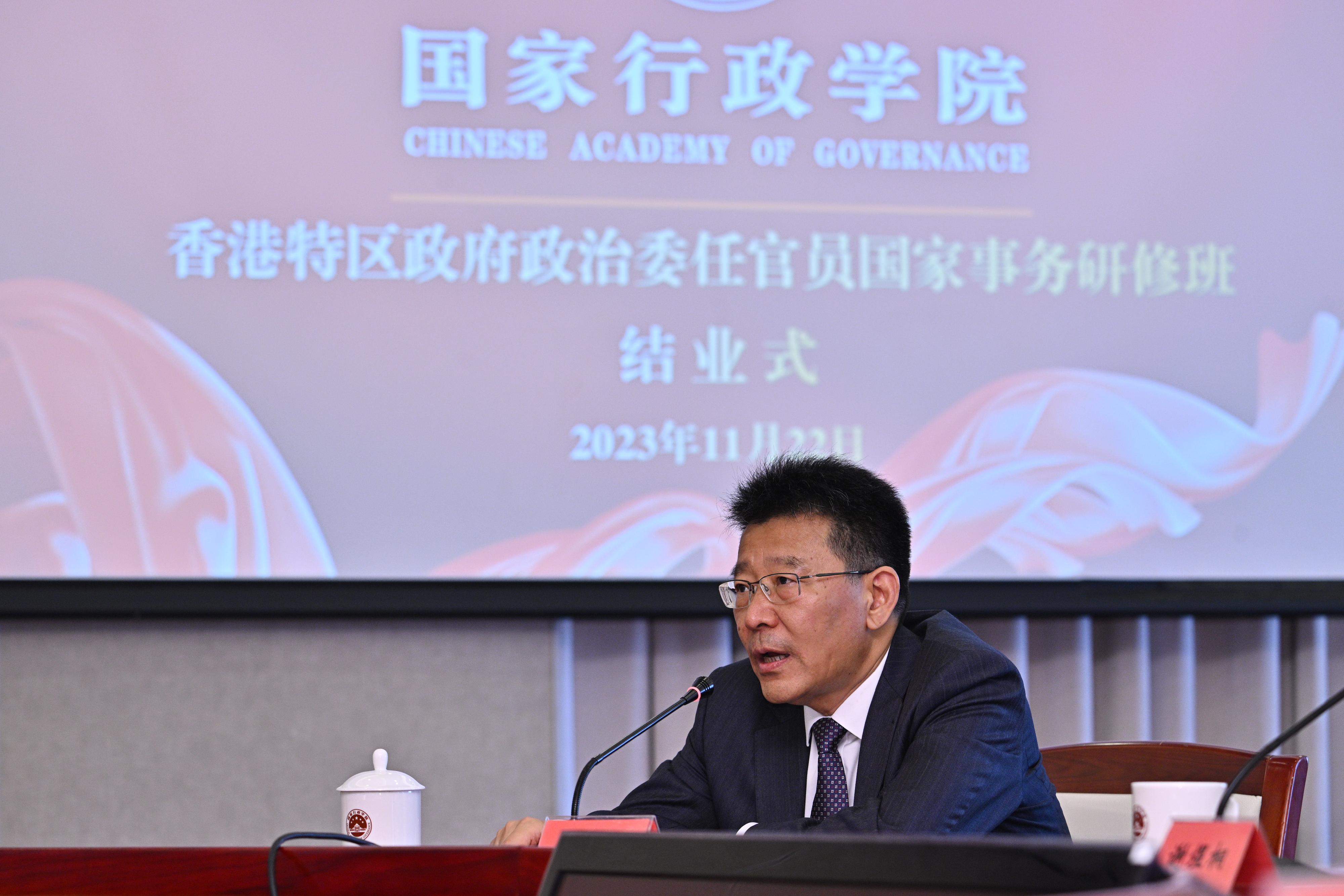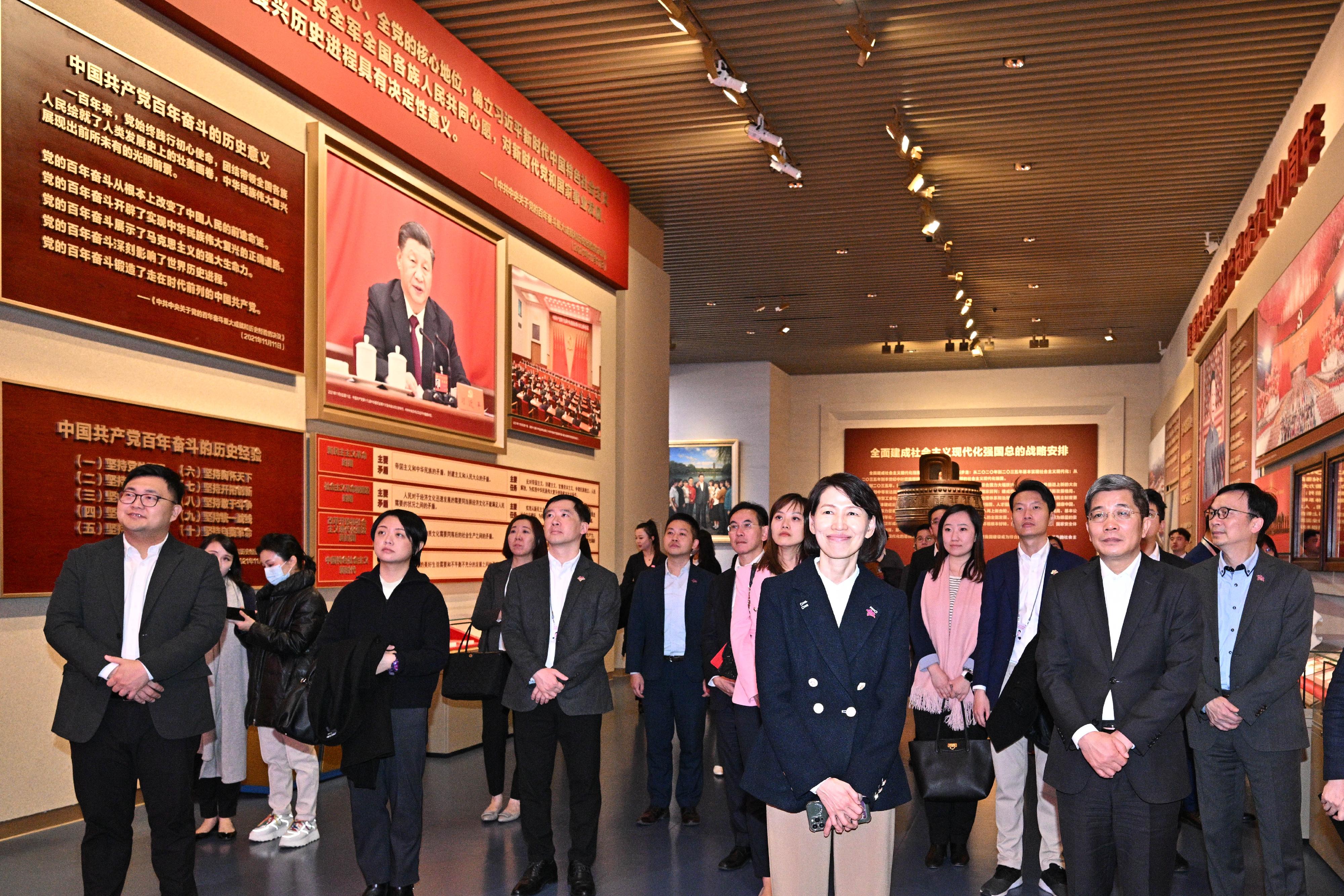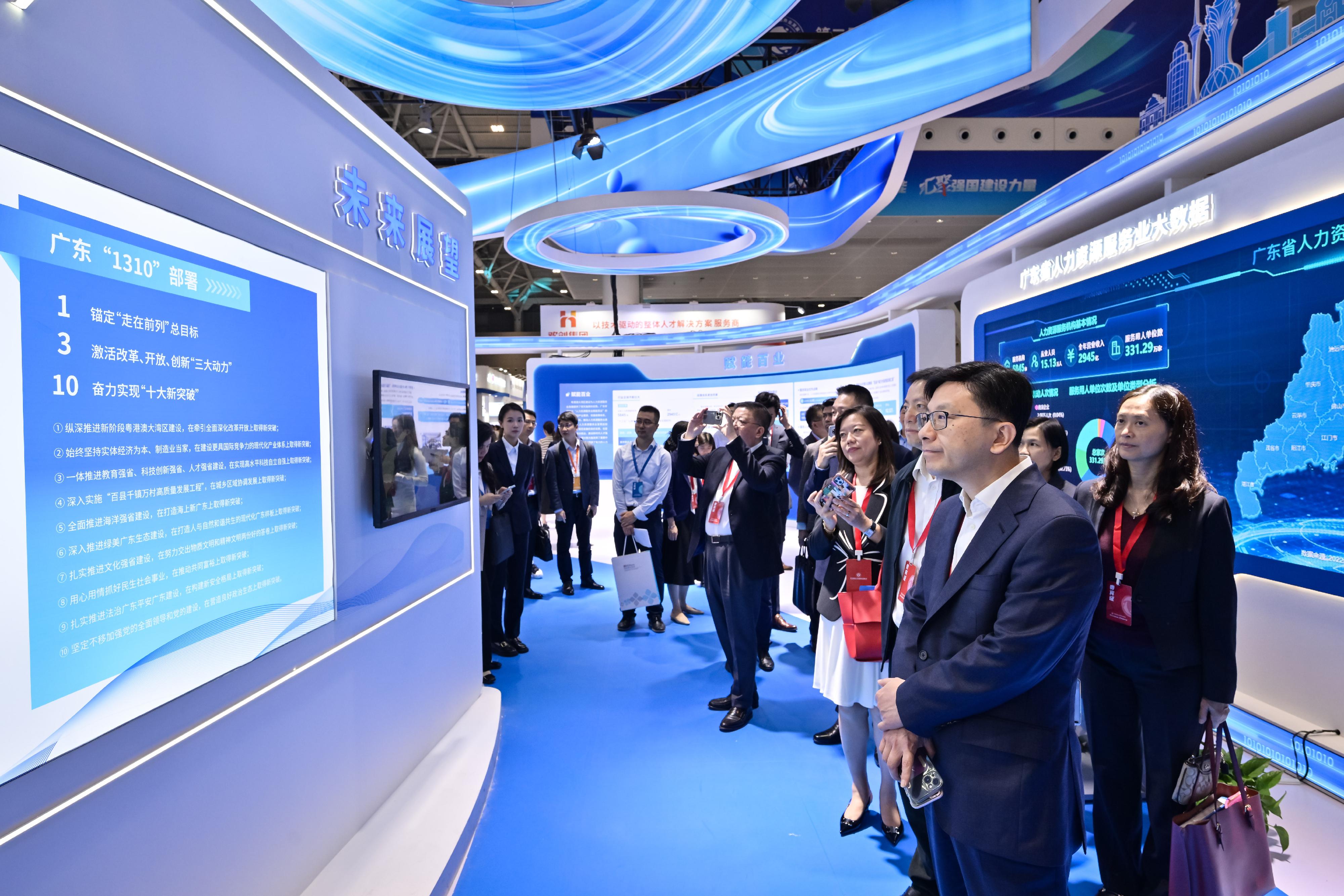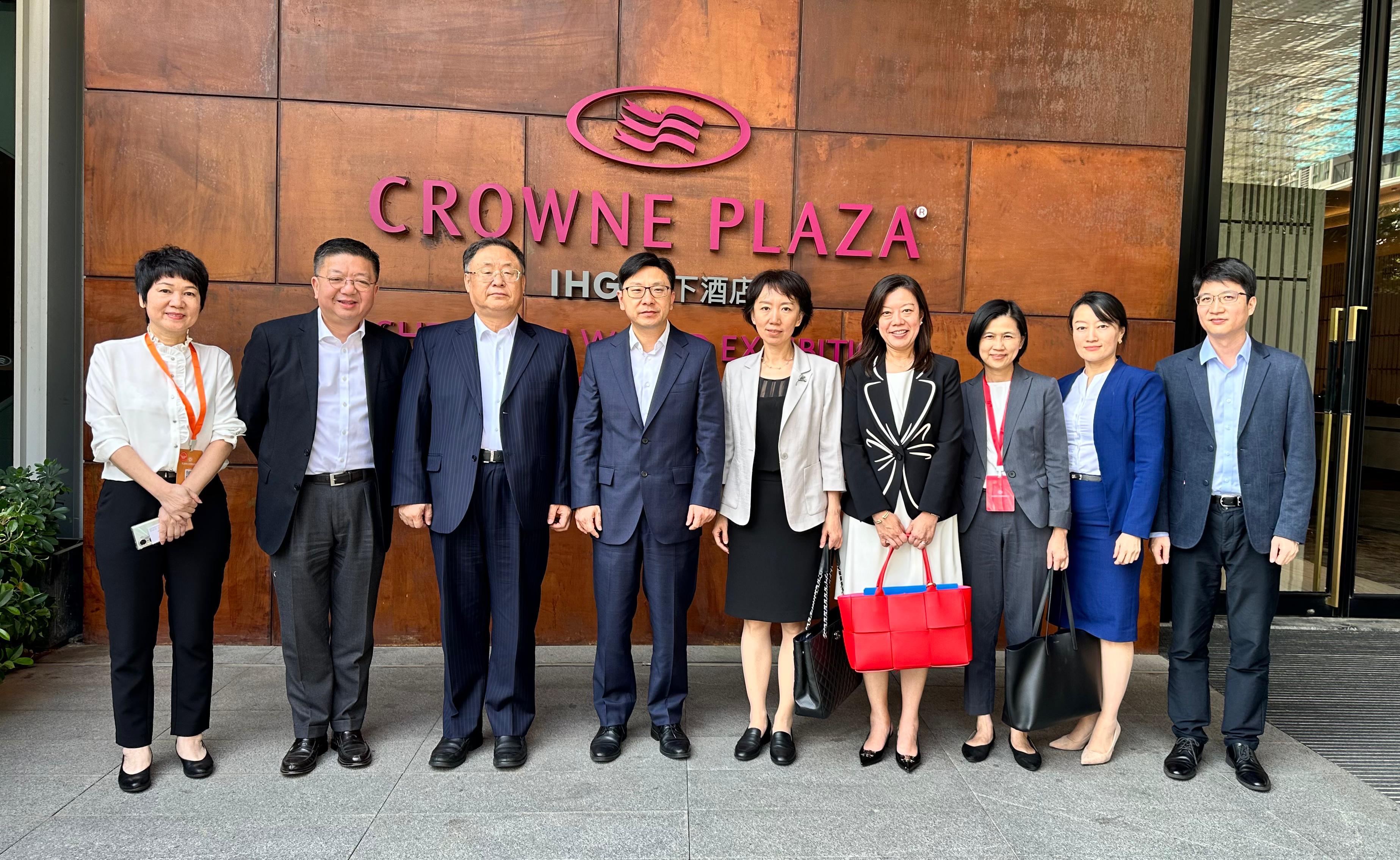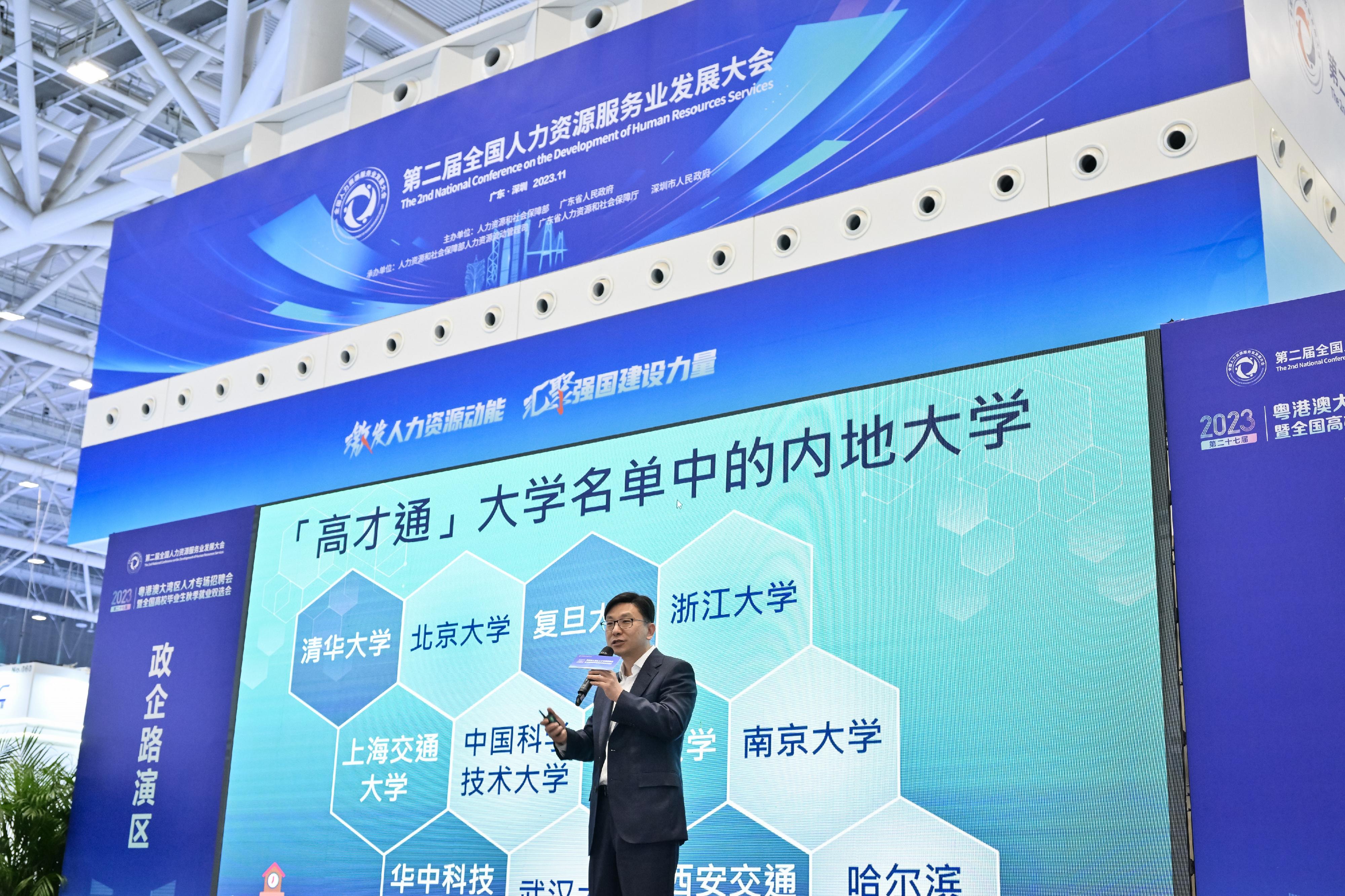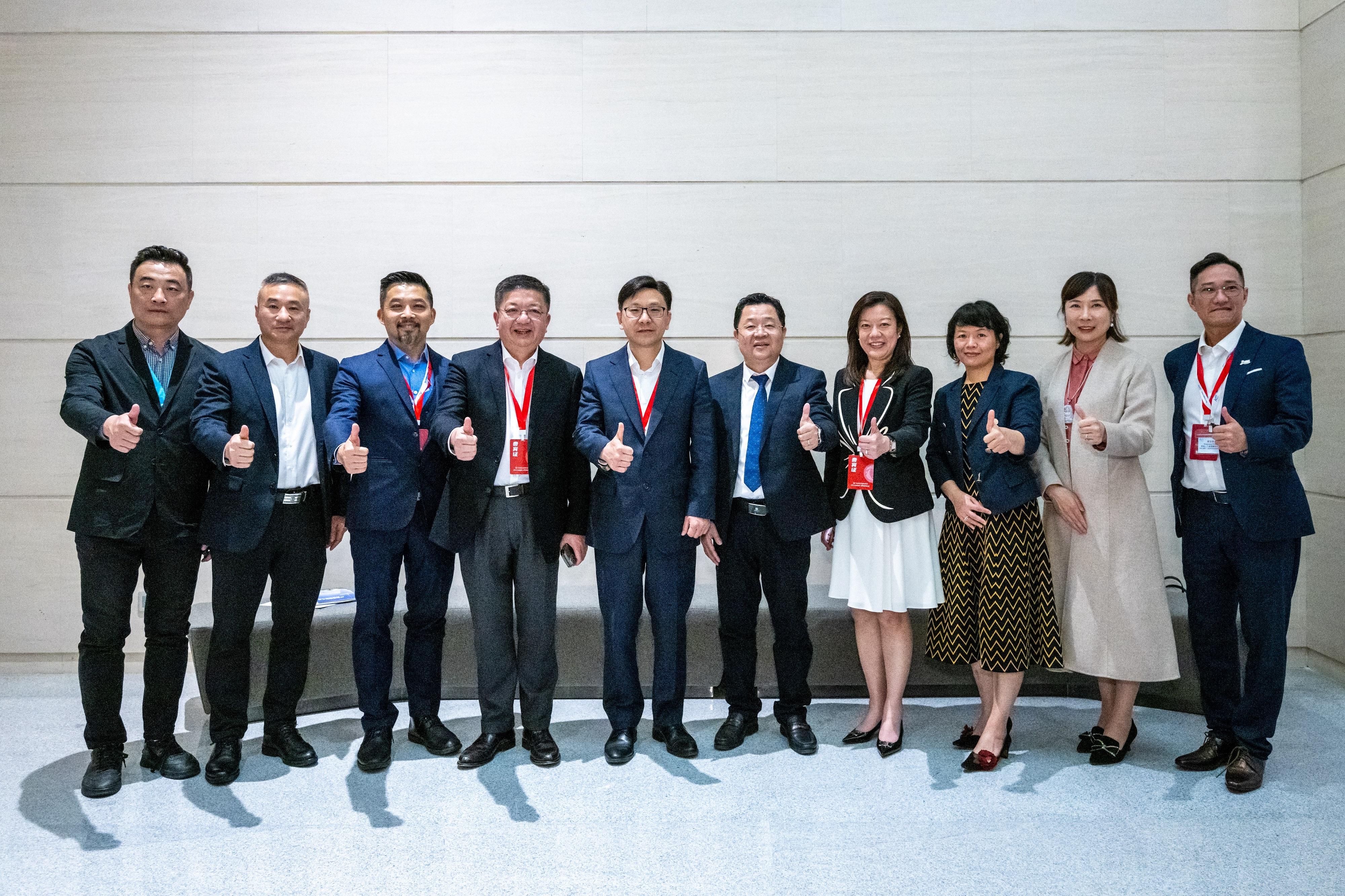Following is a question by the Hon Martin Liao and a written reply by the Secretary for Commerce and Economic Development, Mr Algernon Yau, in the Legislative Council today (November 22):
Question:
It is learnt that recently, Hong Kong’s economic growth has been unsatisfactory, with a low turnover in the stock market, and the International Monetary Fund (IMF) has projected that the global economic growth will slow down significantly in the next five years. On the other hand, the Government pointed out on August 11 this year that inbound tourism and private consumption would remain the major drivers of economic growth for the rest of the year. Regarding measures to boost Hong Kong’s economy, will the Government inform this Council:
(1) as a survey has been reported to have pointed out that the overall Hong Kong Consumer Confidence Index in the third quarter has fallen by 2.3 per cent quarter-on-quarter, and also in view of the craze for going north for spending among Hong Kong people, how the Government will, in response to the changes in the consumption demand of members of the public, take corresponding actions in respect of consumption supply to enhance Hong Kong people’s consumption confidence and make them stay and spend in Hong Kong; how the Government will assist enterprises in re-positioning themselves in the market to meet the demands of consumers;
(2) given that in September this year, Shenzhen published the Shenzhen Municipality’s Certain Measures on Promoting Consumption which contains many measures facilitating Hong Kong people to go to Shenzhen for spending, whether the Government will, in the light of the very high savings rate of Mainland residents, launch similar facilitation measures to attract Mainland residents to come to Hong Kong to unleash their huge spending power, so that Hong Kong’s economy can benefit therefrom; if so, of the details; if not, the reasons for that; and
(3) as there are views pointing out that although Hong Kong’s economy enjoys the strong support of the motherland, our country currently needs to face problems such as the debt problems in relation to Mainland real estate companies, and it has been reported that an IMF report has adjusted downward the projected growth of China, and also in view of the withdrawal of some foreign capital from the Hong Kong market due to geopolitical issues, it is necessary for Hong Kong to explore more sources of foreign capital, and while Hong Kong is exploring the Middle East market, Hong Kong businessmen may not be familiar with the business environment there, how the Government will assist Hong Kong businessmen in expediting their entry into the Middle East market; of the new strategies put in place by the Government to attract enterprises from other countries or regions to develop their business or invest in Hong Kong?
Reply:
President,
Having consulted the Culture, Sports and Tourism Bureau and the Office for Attracting Strategic Enterprises (OASES), my consolidated reply to the Hon Martin Liao’s question is as follows:
(1) To assist Hong Kong enterprises in seizing opportunities brought about by the return to normalcy, and to allow the general public to experience and partake in the diverse charisma of local culture, eateries and shops, as well as to showcase the appeal of our vibrant city, thereby revitalising consumer sentiment, the Government has launched a series of measures as follows.
A series of “Happy Hong Kong” events, launched since April, including various Gourmet Marketplaces organised in different parts of the city, the summer Harbour Chill Carnival on the Wan Chai promenade, the Cinema Day and other events, have all contributed to the energetic atmosphere on our streets. Subsequently, through the “Night Vibes Hong Kong” campaign which commenced in September, the Government, joining hands with various organisations, held an array of night-time events with Hong Kong’s unique appeal and attractiveness, encompassing themes such as leisure, arts, culture and retail consumption, spanning festivities including the National Day, Halloween, Christmas and the New Year until early 2024. There has been positive response to the campaign from various sectors in Hong Kong. As at October 31, some 270 000 people have visited the night-time events at the three harbourfront sites; meanwhile, the events specifically designed for different Chinese and western festivals have drawn the enthusiastic participation of many residents. For instance, the lantern carnivals held during the Mid-Autumn Festival recorded a cumulative attendance of around 660 000, with more than 300 000 visiting the lantern carnival at Victoria Park. In addition, the National Day Fireworks Display attracted over 430 000 spectators on both sides of the Victoria Harbour. These events were conducive to the fostering of a revitalised post-pandemic atmosphere and encouraged consumer spending.
Apart from the consumption brought about by injecting impetus into the night economy, the Government has also dedicated its efforts towards promoting and taking advantage of Hong Kong’s unique culture appeal as a dynamic and vibrant city, to provide residents and tourists with a diverse living experience, and enhance consumer sentiment by holding various large-scale and mega events. In 2023-24, such events organised or under planning in Hong Kong include the Hong Kong International Dragon Boat Races, Harbour Chill Carnival, Hong Kong Cyclothon, Hong Kong Wine & Dine Festival, Hong Kong WinterFest, Art Basel Hong Kong, the Hong Kong Sevens, Hong Kong Pop Culture Festival 2023, Hong Kong New Year Countdown Celebrations, and Hong Kong Chinese New Year Celebrations next year.
In addition to conducting large scale events, the Government has also provided funding support through the SME Export Marketing Fund (EMF) to encourage small and medium enterprises (SMEs) to participate in marketing activities, assist them in exploring markets and entice relevant consumer spending. Starting from end-April 2021, a special measure has been introduced under the EMF to expand the funding scope to cover exhibitions targeting the local market and online exhibitions. As at end-September 2023, over 16 000 applications concerning exhibitions targeting the local market and online exhibitions have been approved under the EMF, involving a funding amount of nearly $400 million. This special measure has been extended to end-June 2026, with a view to assisting more SMEs in promoting their products through various means to attract consumers.
(2) To attract visitors to Hong Kong, the Hong Kong Special Administrative Region (HKSAR) Government launched the “Hello Hong Kong” large-scale global promotional campaign in February 2023. The Hong Kong Tourism Board (HKTB) has rolled out a series of promotional activities to send a welcoming message to the world to entice visitors to come experience first-hand Hong Kong’s diverse appeals. Among the activities, the HKTB has distributed around two million “Hong Kong Goodies” visitor consumption vouchers, each with a value of $100. Visitors could redeem the vouchers for a free welcome drink at designated bars, restaurants and hotels, or choose an offer at dining and retail outlets, attractions or transport.
Since reopening, Hong Kong has topped the list of outbound travel destinations for users of the Mainland online platform Xiaohongshu. In collaboration with Xiaohongshu, the HKTB launched the “Hong Kong Travel Time Machine” and “Art Travel to Hong Kong” programmes in the first half of this year, which generated more than 200 million total exposure for Hong Kong tourism. The HKTB also collaborated with Xiaohongshu to launch the “Hong Kong Citywalk Guide” in September, introducing five distinctive Hong Kong itineraries for Mainland visitors to assist them in conveniently planning their trips. The itineraries cover popular tourist attractions in Hong Kong and introduce major festivals and events.
Apart from the above, riding on the “Night Vibes Hong Kong” campaign, the HKTB has since November been handing out one million sets of new “Hong Kong Night Treats” visitor dining coupons, each with a value of $100, to encourage visitors to go out and enjoy the city’s night-time offerings and experience Hong Kong’s captivating wine and dine. Visitors can redeem the coupons for a $100 discount after 6pm at participating bars and restaurants. The HKTB has also launched a special offer for an open-top bus night tour to visitors to Hong Kong. From November 2023 to January 2024, visitors can enjoy tours on three night bus routes for $20, exploring various attractions and landmarks in Hong Kong Island and Kowloon. Not only can they immerse themselves in the city’s evening charm, but they may also hop on and off at their favourite spots as they wish for exploration, dining and shopping.
In addition, the Tourism Commission held the new phase of “Design District Hong Kong” creative tourism project from August to October this year, promoting Tsuen Wan as an emerging tourist destination to visitors through art installations as well as a series of cultural activities, and the second edition of the “Sai Kung Hoi Arts Festival 2023” between November 15, 2023 and January 14, 2024. Apart from displaying artworks on Yim Tin Tsai, Sharp Island, Kau Sai Chau, High Island and Sai Kung Waterfront Park, guided tours and programmes of various themes are offered to participants free of charge during the Festival. We envisage that through the in-depth tourism products, more Mainland visitors would be attracted to come to Hong Kong to experience our diverse appeals.
Meanwhile, to further facilitate the development of tourism, the Government announced in the 2023 Policy Address that the Cultural and Heritage Sites Local Tour Incentive Scheme will be transformed into the Characteristic Local Tourism Incentive Scheme to provide more in-depth itinerary design, training, etc., in order to encourage the trade to develop more thematic tours.
Apart from the various abovementioned promotion measures which aim at attracting Mainland visitors, the Government, as mentioned in part (1) of the reply, will continue to stage and support various large-scale tourism events, and create a unique festive ambience to display the charm of Hong Kong and diversify visitors’ experiences.
(3) The Middle East region has a plethora of natural resources. In recent years, it has sought to diversify economically and reduce reliance on income from the oil industry, thereby creating more novel business opportunities and investment projects. The region is also one of the key areas in the Nation’s Belt and Road Initiative. The HKSAR Government accords great importance to bilateral relations between Hong Kong and Middle Eastern countries, and has always dedicated itself to the promotion of trade and economic ties. In February 2023, the Chief Executive led a high-level business delegation to visit the Middle East region, and promoted to local government and business sectors in Saudi Arabia and the United Arab Emirates (UAE) the unique advantages of Hong Kong. During the visit, Hong Kong and Saudi Arabian and the UAE enterprises and institutions signed a total of 13 high quality memoranda of understanding or letters of intent, all of which constructed a sturdy basis for the long-term development of Hong Kong businesses in the Middle East region, while simultaneously attracting local businesses and capital to invest in Hong Kong.
Riding on the fruitful outcomes of the Chief Executive’s visit to the Middle East region, the HKSAR Government jointly organised the 8th Belt and Road Summit with the Hong Kong Trade Development Council in September 2023. Newly launched at this year’s edition of the Summit, the “Middle East Forum” promoted some 50 investment/co-operation projects in the Middle East region. During the Summit, a total of 21 memoranda of understanding or letters of intent were signed, six of which were related to the Middle East region, covering various areas such as sustainable energy, construction resources, and research and development.
The Hong Kong Economic and Trade Office (ETO) in Dubai (Dubai ETO), which commenced operation in October 2021, is our 14th overseas ETO and the first ETO in the Middle East region. The Dubai ETO has been fostering closer trade and economic ties between Hong Kong and trading partners in the region, especially member states of the Gulf Cooperation Council (Note). Taking advantage of various platforms for interaction and co-operation on government and business levels, the Dubai ETO has encouraged Hong Kong enterprises and professionals, including those in the fields of logistics, construction, finance, law, accounting and management, to expand into the rapidly developing Middle East market.
Moreover, under “one country, two systems”, Hong Kong has the distinctive advantages of enjoying strong support of the Motherland and being closely connected to the world. Hong Kong is not just a “super connector”, but also a “super value-adder” that offers abundant opportunities to enterprises and investors from the Middle East, in seizing the unprecedented potential of national development strategies such as the Guangdong-Hong Kong-Macao Greater Bay Area and the Belt and Road Initiative. To consolidate and continually strengthen the basis for trade and economic co-operation between Hong Kong and countries in the Middle East, Hong Kong has concluded investment agreements with Kuwait and the UAE, and is conducting investment agreement negotiations with Bahrain and Saudi Arabia with a view to concluding relevant discussions as soon as possible. At the same time, we are proactively seeking to explore bilateral free trade agreements with economies in the Middle East (such as the UAE).
As for attracting enterprises from other countries or regions to develop or invest in Hong Kong, the HKSAR Government has adopted relevant measures in various areas. For example, the Chief Executive announced in his Policy Address that the Government will introduce a mechanism to facilitate companies domiciled overseas to re‑domicile in Hong Kong. Moreover, the Government will continue to vigorously attract global family offices and asset owners to Hong Kong and, through measures such as the new Capital Investment Entrant Scheme, tax exemptions and reductions, and the Network of Family Office Service Providers launched in June 2023, promote the various opportunities in Hong Kong. We also plan to organise more delegations for Hong Kong and Mainland enterprises to visit countries along the Belt and Road, and promote to local business sectors, in the process, the multi-faceted advantages of Hong Kong including our world class professional services, with an aim to attracting local enterprises to develop in Hong Kong.
Indeed, the current term Government places much emphasis on investment promotion. The Office for Attracting Strategic Enterprises (OASES), responsible for attracting high potential and representative enterprises of importance from around the globe to Hong Kong, was established in December 2022. Since its inception, the OASES has reached out to over 200 strategic enterprises, of which 30 are planning to establish a foothold or expand their operations in Hong Kong. A total of about $30 billion of new investment is involved, with around 10 000 employment opportunities expected to be created. With the Launching Ceremony of OASES Partnership held in October 2023, the OASES has become an official partner of the first batch of 20 strategic enterprises setting up or expanding their business in Hong Kong. They will work together to promote the development of the innovation and technology ecosystem of Hong Kong.
Meanwhile, Invest Hong Kong (InvestHK) continues to actively provide high-quality and comprehensive support for other overseas and Mainland enterprises interested in setting up or expanding their operations in Hong Kong. Apart from setting up consultant offices in Nairobi of Kenya, Africa and Almaty of Kazakhstan, Central Asia, the InvestHK also strengthened the investment promotion network under the Dubai ETO. In the first nine months of this year, the InvestHK assisted 300 Mainland and overseas enterprises in establishing or expanding their operations in Hong Kong, representing an increase of more than 25 per cent over the same period last year. The fact that these enterprises came from across the globe and various trades and industries is a testament to Hong Kong’s attractiveness to enterprises as an international business centre. The InvestHK and the Hong Kong Trade Development Council will set up consultant offices along the Belt and Road in 2024-25 to proactively reach out to high-potential enterprises and talents, with a view to further attracting high-potential enterprises from emerging countries to set up businesses in Hong Kong.
Note: The member states of the Council are Bahrain, Kuwait, Oman, Qatar, Saudi Arabia and the UAE. read more



